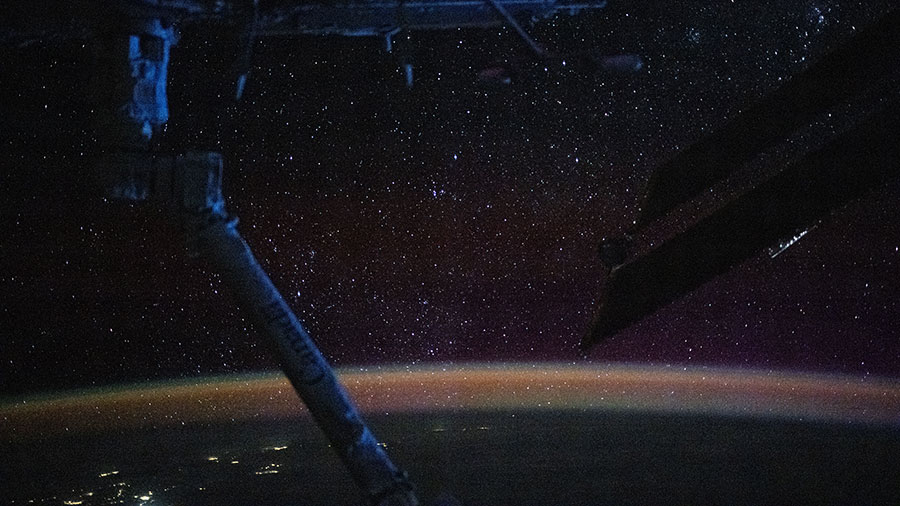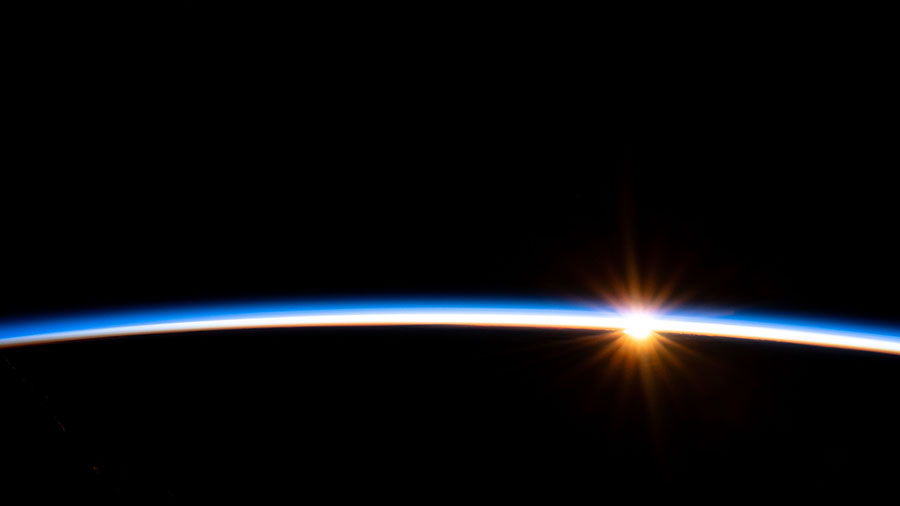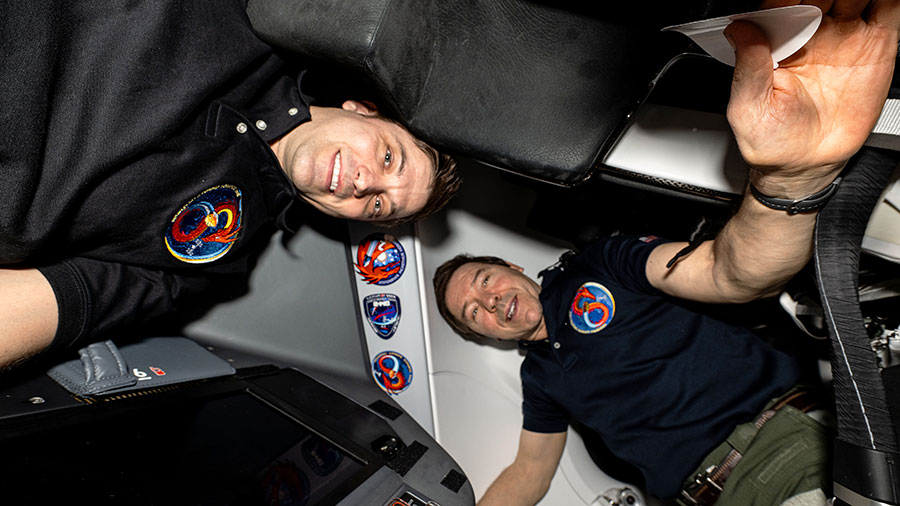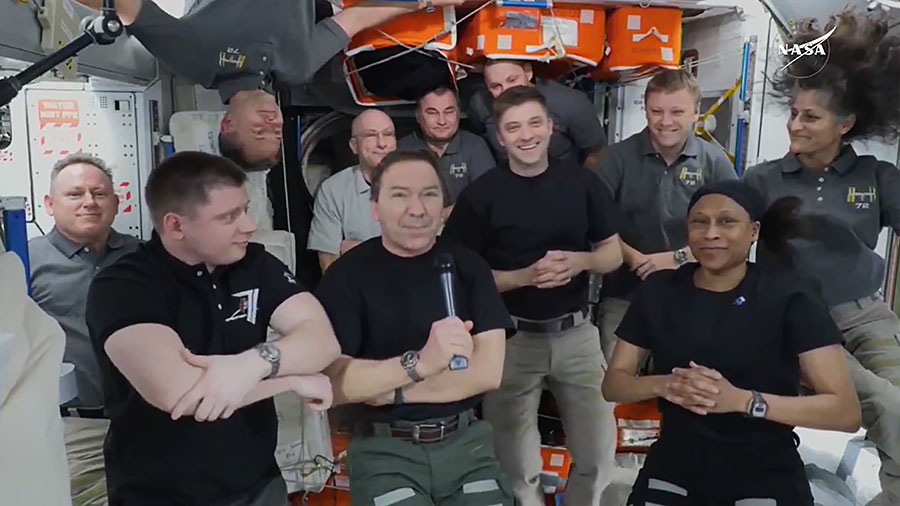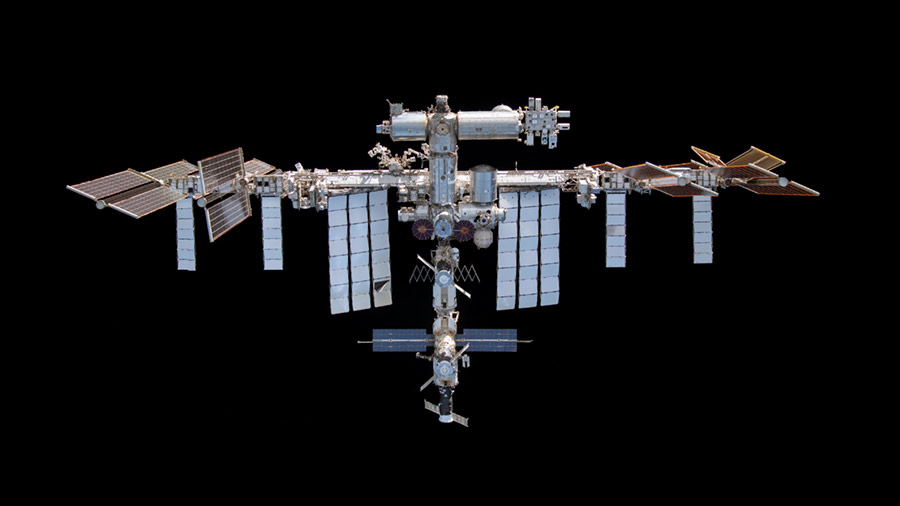
Mission officials continue monitoring weather conditions off the coast of Florida and have decided to wave off Monday night’s undocking of NASA’s SpaceX Crew-8 mission to no earlier than 9:05 p.m. EDT on Tuesday.
Crew-8 members Matthew Dominick, Mike Barratt, Jeanette Epps, all three from NASA, and Alexander Grebenkin from Roscosmos woke up late Monday having shifted their sleep schedules in anticipation of Monday’s departure. However, the Commercial Crew quartet spent the rest of the day continuing their daily exercise routines and standard housekeeping tasks aboard the orbiting lab. The four SpaceX Dragon Endeavour crewmates will continue their sleep shifts through Tuesday morning when they receive the next weather briefing to determine their next undocking and splashdown opportunities.
Expedition 72 Commander Suni Williams and Flight Engineers Butch Wilmore, Nick Hague, and Don Pettit also slept in on Monday having been previously scheduled to assist their departing crewmates. The four NASA astronauts worked a light duty day on Monday and will maintain their adjusted sleep shifts in readiness for Tuesday’s targeted departure of the Crew-8 mission.
The station’s three other cosmonauts from Roscosmos, Alexey Ovchinin, Ivan Vagner, and Aleksandr Gorbunov, remained focused throughout Monday on their contingent of microgravity research and orbital maintenance. Ovchinin started his day replacing life support components in the Zvezda service module before wrapping up his shift imaging with a hyperspectrometer the effects of natural and human impacts on Earth. Vagner packed trash and obsolete gear inside the Progress 88 resupply ship ahead of its mid-November departure. Gorbunov downloaded data collected from radiation detectors then inspected and cleaned laptop computers inside the Nauka science module.
Learn more about station activities by following the space station blog, @space_station and @ISS_Research on X, as well as the ISS Facebook and ISS Instagram accounts.
Get weekly video highlights at: https://roundupreads.jsc.nasa.gov/videoupdate/
Get the latest from NASA delivered every week. Subscribe here: www.nasa.gov/subscribe


